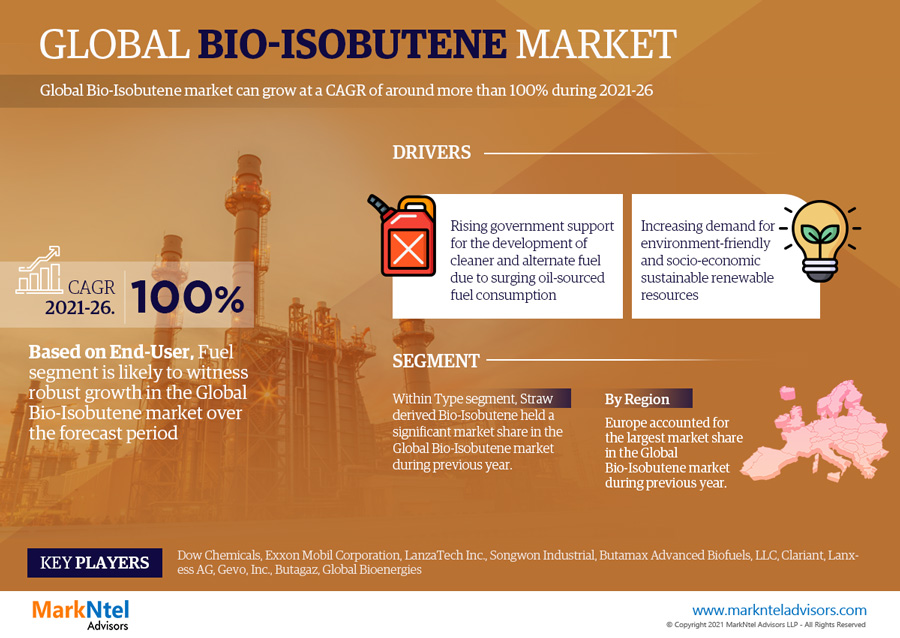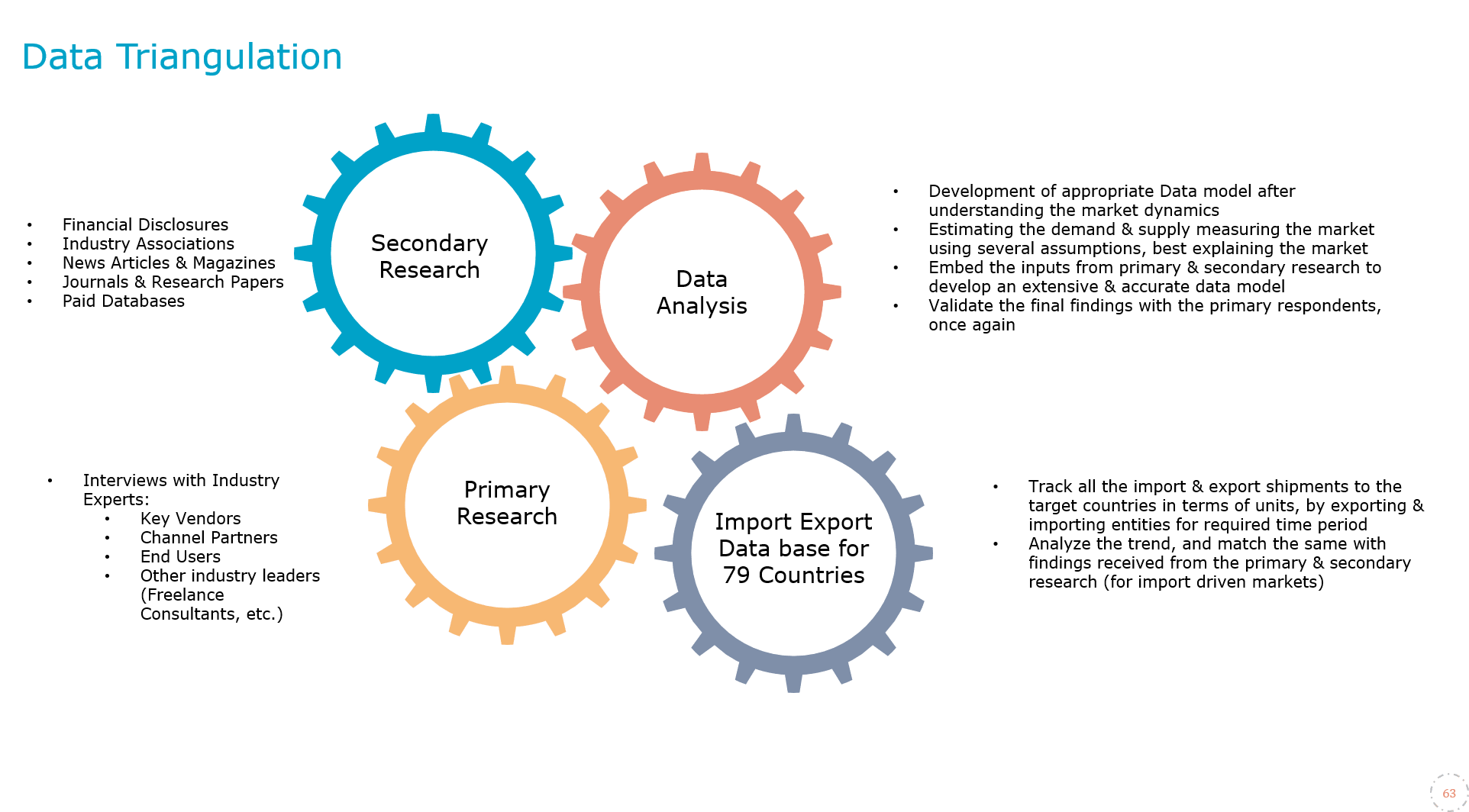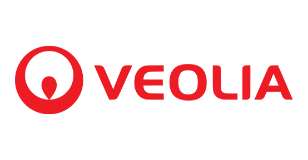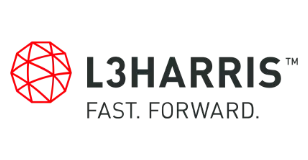
Global Bio-Isobutene Market Research Report: Forecast (2021-2026)
By Type (Straw derived Bio-Isobutene, Sugar beet and Sugar cane derived Bio-Isobutene, Wood derived Bio-Isobutene, Cereals derived Bio-Isobutene, Tubers derived Bio-Isobutene), By ...End-User (Fuel, Lubricant Additives, Bio-Based Cosmetic Ingredients, Butyl Rubber, Organic Glass, Bio-Based Plastics) By Region (North America, South America, Europe, Asia-Pacific, Middle East, and Africa), By Country (U.S, Canada, Mexico, Brazil, Germany, France, The U.K, Italy, Spain, GCC, South Africa, India, China, South Korea, Japan), By Competitors (BASF SE, Exxon Mobil Corporation, LanzaTech Inc., Songwon Industrial, Butamax Advanced Biofuels, LLC, Clariant, Lanxess AG, Eastman Chemical Company, INEOS, Sinopec Corp, Dow Chemicals, Gevo, Inc., Butagaz, Global Bioenergies) Read more
- Chemicals
- Apr 2021
- Pages 232
- Report Format: PDF, Excel, PPT
Market Definition
Isobutene is a hydrocarbon used as a starting material for producing butyl rubber, polyisobutylene, & polybutene. It is a sustainable & environment-friendly substitute for isobutene exhibiting similar properties. The non-toxic nature of Bio-isobutene is leading to its wide application in multiple end-user industries to reduce their dependence on fossil fuels. In the coming years, the adoption of these chemicals is very likely to accelerate exponentially across the aviation, automotive, & cosmetic industries. Several leading players & governments of different countries are conducting notable research & development activities to expand the utilization of bio-isobutene and contribute toward environmental sustainability.
Market Insights
The Global Bio-Isobutene Market is projected to witness more than 100% CAGR during the forecast period, i.e., 2021-26. The growth of the market is likely to be driven primarily by the mounting concerns over environmental sustainability due to excess carbon emissions, depletion of natural resources, etc., i.e., compelling governments of different countries worldwide toward the production & utilization of environment-friendly & renewable products.
Additionally, these governments are laying out favorable policies & growth opportunities for the leading market players to develop alternatives like Bio-Isobutene. Several countries are also using these bio-chemicals as fuel alternatives to make the transportation & automotive industry amongst the prominent adopters of bio-isobutene.
Besides, the application of isobutene is extensive and spread across industries like transportation, cosmetic, butyl rubber, lubricants, green plastics, solvent industries, etc. Hence, an alternative like bio-isobutene with environment-friendly nature is anticipated to witness substantial acceptance & utilization in place of conventional streams, which, in turn, would drive the global market in the coming years.
Moreover, fluctuating prices of raw materials & changing dynamics of fuel standards, especially in the aviation industry, shall further stimulate the development & production of bio-isobutene & augment the overall market growth through 2026.
| Report Coverage | Details |
|---|---|
| Study Period | Historical Data: 2016-19 |
| Base Year: 2020 | |
| Forecast Period: 2021-26 | |
| CAGR (2021-2026) | 100% |
| Regions Covered | North America: USA, Canada, Mexico |
| Europe: Germany, The UK, France, Spain, Italy | |
| Asia-Pacific: China, India, Japan, South Korea | |
| South America: Brazil | |
| Middle East & Africa: GCC, South Africa | |
| Key Companies Profiled | BASF SE, Exxon Mobil Corporation, LanzaTech Inc., Songwon Industrial, Butamax Advanced Biofuels, LLC, Clariant, Lanxess AG, Eastman Chemical Company, INEOS, Sinopec Corp, Dow Chemicals, Gevo, Inc., Butagaz, Global Bioenergies |
| Unit Denominations | USD Million/Billion |
Impact of Covid-19 on the Global Bio-Isobutene Market
In 2020, the Covid-19 pandemic severely impacted most industries worldwide. Since bio-isobutene is petroleum-based, the acutely hit oil & gas sector, with volatile crude oil prices, had a direct & simultaneous impact on the Global Bio-Isobutene Market. As a result, it introduced several growth challenges for the market like suspended or delayed research & development activities on bio-isobutene, hampered fuel transportation, etc., thereby causing massive financial losses to the leading players in the global market amidst the crisis.

Market Segmentation
Based on the Type:
- Straw Derived Bio-Isobutene
- Sugar Beet & Sugarcane Derived Bio-Isobutene
- Wood derived Bio-Isobutene
- Cereals Derived Bio-Isobutene
- Tubers Derived Bio-Isobutene
Of them all, the demand for Straw Derived Bio-Isobutene is anticipated to demonstrate astronomical growth over the forecast years. It owes principally to the mounting focus of governments of different countries worldwide on addressing the alarming concerns over environmental depletion due to plastics & excessive use of fossil fuels. Hence, they are taking several initiatives for reducing excess wheat straws while generating growth opportunities for the leading market players to develop & upscale the production of bio-isobutene using these wheat straws.
On the other hand, Sugar Beet & Sugar Cane-derived Bio-Isobutene acquired a significant market share in recent years, mainly due to the increasing focus of governments on encouraging the production of sugar beet & sugar cane to derive sucrose for its further use in bio-isobutene production in order to reduce carbon emissions. Prominent companies like Global Bioenergies (GBE) are actively participating in increasing the production of sucrose due to escalating demand for fuel alternatives, especially from the aviation industry.
Based on End-Users:
- Fuel
- Lubricant Additives
- Bio-Based Cosmetic Ingredients
- Butyl Rubber
- Organic Glass
- Bio-Based Plastics
Here, Fuel is anticipated to dominate the Global Bio-Isobutene Market with the largest share during the forecast period. It owes principally to the rapidly increasing demand for residuals like sugar, wood, & wheat straws, among others, to produce biofuel as an alternative to fossil fuels. In addition, with the growing focus on reducing carbon footprints and attaining the net Green House Gas (GHG) levels, different countries & industries are increasingly adopting sustainable fuels.
The aviation sector is increasingly collaborating with various sustainable aviation fuel producers to curb carbon emissions, which, in turn, is augmenting the demand for biofuels & generating profitability in bio-isobutene production. For instance:
- In 2018, Global Bioenergies (GBE) joined forces with SkyNRG to add its isobutene-based SAF into ASTM D7566 and enable its commercial use by airlines.
Regional Landscape
Geographically, the Global Bio-Isobutene Market expands across:
- North America
- South America
- Europe
- Middle East & Africa
- Asia-Pacific
Amongst all regions globally, Europe dominated the market with the largest share in recent years and would prevail the same trend during the forecast period. It owes principally to the mounting focus of governments in France, Germany, and the UK on curbing carbon emission levels & investing substantially in the production of different bio-based products, including bio-isobutene.
Additionally, favorable government policies for bio-isobutene production shall also generate lucrative opportunities for the leading players in the regional market through 2026. Besides, the abundant presence of wheat straws is instigating producers to optimize the conversion of residuals into bio-isobutene & make a positive influence on the regional market.
In Europe, France is likely to dominate the regional market in the coming years, owing to its massive cosmetic industry, i.e., propelling the demand for bio-isobutene as a replacement for petroleum-based ingredients. Additionally, the application of bio-isobutene for hairspray & deodorant shall also positively influence France's cosmetic industry and boost the regional market in the years to come.
On the other hand, the Bio-isobutene Market shall observe a significant growth rate across Asia-Pacific during 2021-26, owing primarily to the rapidly expanding automotive sector demonstrating an active procurement of bio-isobutene as an alternative to fossil fuels. Across the region, countries like China, India, Japan, & South Korea have massive automotive industries.
Additionally, the accelerating vehicle production & rapid upgrades would also positively influence the regional market growth in the coming years. Besides, the burgeoning focus of governments of different countries across the region on curbing carbon emissions & procuring greener products is another crucial aspect projected to generate remunerative opportunities for the regional market players during 2021-26. For instance:
- In February 2020, Reliance Industries Ltd. began a joint venture with Sibur to set up a Butyl Rubber Plant in Jamnagar, India.
Recent Developments by Leading Companies
- Global Bioenergies, a french company that uses agriculture products to produce light liquid hydrocarbons through different biological methods, has, since 2019, been actively working on the application of bio-isobutene as an alternative to petroleum in cosmetic products.
- In addition, the leader has recently launched its make-up brand, LAST, the production unit of which is at Pomacle, France. In the coming years, the leader plans to expand the plant to produce massive skincare & haircare products using renewable materials like Bio-Isobutene & substituting silicon.
Market Dynamics:
Key Driver: Increasing Government Inclination toward Bringing Environmental Sustainability
With growing concerns over the depleting environmental conditions due to the rapidly increasing carbon emissions, governments of different countries worldwide are encouraging several industries to adopt bio-based products like bio-isobutene in order to achieve sustainability of resources & reduce dependency on fossil fuels.
Moreover, the aviation industry, the largest contributor to carbon emissions, is also conducting numerous research & development activities to develop sustainable aviation fuel & positively influence the growth of the Global Bio-Isobutene Market. In addition, the cosmetic industry is another prominent role player utilizing bio-isobutene as an alternative to petroleum and contributing to the overall market expansion.
Possible Restraint: Technical Barriers & Unavailability of Skilled Labor
Bio-isobutene production requires technical expertise. Hence, the unavailability of skilled professionals might act as a significant growth restraint for the Global Bio-isobutene Market during 2021-26. Additionally, the high initial cost incurred while procuring bio-isobutene may also limit the market growth for cost-sensitive or consolidated end-users through 2026.
Key Questions Answered in the Market Research Report:
- What are the overall statistics or estimates (Overview, Size- By Value, Forecast Numbers, Segmentation, Shares) of the Global Bio-Isobutene Market?
- What are the region-wise industry size, growth drivers, and challenges?
- What are the key innovations, opportunities, current & future trends, and regulations in the Global Bio-Isobutene Market?
- Who are the key competitors, their key strengths & weaknesses, and how do they perform in the Global Bio-Isobutene Market based on the competitive benchmarking matrix?
- What are the key results derived from surveys conducted during the Global Bio-Isobutene Market study?
Frequently Asked Questions
- Introduction
- Product Definition
- Research Process
- Assumptions
- Market Segmentation
- Preface
- Executive Summary
- Impact of COVID-19 on Global Bio-Isobutene Market
- Global Bio-Isobutene Market Trends & Insights
- Global Bio-Isobutene Market Dynamics
- Drivers
- Challenges
- Impact Analysis
- Global Bio-Isobutene Market Hotspots & Opportunities
- Global Bio-Isobutene Market Value Chain Analysis
- Global Bio-Isobutene Market Trade Analysis
- Import and Export Scenario for Bio-Isobutene Market
- Global Bio-Isobutene Market Regulations & Policy
- Global Bio-Isobutene Market Outlook, 2016- 2026F
- Market Size & Analysis
- By Revenue
- By Volume
- Market Share & Analysis
- By Type
- Straw derived Bio-Isobutene
- Sugar beet and Sugar cane derived Bio-Isobutene
- Wood derived Bio-Isobutene
- Cereals derived Bio-Isobutene
- Tubers derived Bio-Isobutene
- By End-User
- Fuel
- Lubricant Additives
- Bio-Based Cosmetic Ingredients
- Butyl Rubber
- Organic Glass
- Bio Based Plastics
- By Region
- North America
- South America
- Europe
- Middle East & Africa
- Asia-Pacific
- By Competitors
- Competition Characteristics
- Market Share & Analysis
- Competitive Metrix
- By Type
- Market Size & Analysis
- North America Bio-Isobutene Market Outlook, 2016-2026F
- Market Size & Analysis
- By Revenue
- By Volume
- Market Share & Analysis
- By Type
- By End-User
- By Country
- The US
- Canada
- Mexico
- The US Bio-Isobutene Market Outlook, 2016-2026F
- Market Size & Analysis
- By Revenue
- By Volume
- Market Share & Analysis
- By Type
- Market Size & Analysis
- Canada Bio-Isobutene Market Outlook, 2016-2026F
- Market Size & Analysis
- By Revenue
- By Volume
- Market Share & Analysis
- By Type
- Market Size & Analysis
- Mexico Bio-Isobutene Market Outlook, 2016-2026F
- Market Size & Analysis
- By Revenue
- By Volume
- Market Share & Analysis
- By Type
- Market Size & Analysis
- Market Size & Analysis
- South America Bio-Isobutene Market Outlook, 2016-2026F
- Market Size & Analysis
- By Revenue
- By Volume
- Market Share & Analysis
- By Type
- By End User
- By Country
- Brazil
- Others
- Brazil Bio-Isobutene Market Outlook, 2016-2026F
- Market Size & Analysis
- By Revenue
- By Volume
- Market Share & Analysis
- By Type
- Market Size & Analysis
- Market Size & Analysis
- Europe Bio-Isobutene Market Outlook, 2016-2026F
- Market Size & Analysis
- By Revenue
- By Volume
- Market Share & Analysis
- By Type
- By End User
- By Country
- Germany
- The UK
- France
- Spain
- Italy
- Others
- Germany Bio-Isobutene Market Outlook, 2016-2026F
- Market Size & Analysis
- By Revenue
- By Volume
- Market Share & Analysis
- By Type
- Market Size & Analysis
- The UK Bio-Isobutene Market Outlook, 2016-2026F
- Market Size & Analysis
- By Revenue
- By Volume
- Market Share & Analysis
- By Type
- Market Size & Analysis
- France Bio-Isobutene Market Outlook, 2016-2026F
- Market Size & Analysis
- By Revenue
- By Volume
- Market Share & Analysis
- By Type
- Market Size & Analysis
- Spain Bio-Isobutene Market Outlook, 2016-2026F
- Market Size & Analysis
- By Revenue
- By Volume
- Market Share & Analysis
- By Type
- Market Size & Analysis
- Italy Bio-Isobutene Market Outlook, 2016-2026F
- Market Size & Analysis
- By Revenue
- By Volume
- Market Share & Analysis
- By Type
- Market Size & Analysis
- Market Size & Analysis
- Middle East & Africa Bio-Isobutene Market Outlook, 2016-2026F
- Market Size & Analysis
- By Revenue
- By Volume
- Market Share & Analysis
- By Type
- By End User
- By Country
- GCC
- South Africa
- Others
- GCC Bio-Isobutene Market Outlook, 2016-2026F
- Market Size & Analysis
- By Revenue
- By Volume
- Market Share & Analysis
- By Type
- Market Size & Analysis
- South Africa Bio-Isobutene Market Outlook, 2016-2026F
- Market Size & Analysis
- By Revenue
- By Volume
- Market Share & Analysis
- By Type
- Market Size & Analysis
- Market Size & Analysis
- Asia Pacific Bio-Isobutene Market Outlook, 2016-2026F
- Market Size & Analysis
- By Revenue
- By Volume
- Market Share & Analysis
- By Type
- By End User
- By Country
- China
- India
- Japan
- South Korea
- Others
- China Bio-Isobutene Market Outlook, 2016-2026F
- Market Size & Analysis
- By Revenue
- By Volume
- Market Share & Analysis
- By Type
- Market Size & Analysis
- India Bio-Isobutene Market Outlook, 2016-2026F
- Market Size & Analysis
- By Revenue
- By Volume
- Market Share & Analysis
- By Type
- Market Size & Analysis
- Japan Bio-Isobutene Market Outlook, 2016-2026F
- Market Size & Analysis
- By Revenue
- By Volume
- Market Share & Analysis
- By Type
- Market Size & Analysis
- South Korea Bio-Isobutene Market Outlook, 2016-2026F
- Market Size & Analysis
- By Revenue
- By Volume
- Market Share & Analysis
- By Type
- Market Size & Analysis
- Market Size & Analysis
- Key Strategic Imperatives for Success and Growth
- Competition Outlook
- Competition Matrix
- Product Portfolio
- Target Markets
- Target End Users
- Research & Development
- Strategic Alliances
- Strategic Initiatives
- Company Profiles
- BASF SE
- Exxon Mobil Corporation
- LanzaTech Inc.
- Songwon Industrial
- Butamax Advanced Biofuels, LLC
- Clariant
- Lanxess AG
- Eastman Chemical Company
- INEOS
- Sinopec Corp
- Dow Chemicals
- Gevo, Inc.
- Butagaz
- Global Bioenergies
- Competition Matrix
- Disclaimer
MarkNtel Advisors follows a robust and iterative research methodology designed to ensure maximum accuracy and minimize deviation in market estimates and forecasts. Our approach combines both bottom-up and top-down techniques to effectively segment and quantify various aspects of the market. A consistent feature across all our research reports is data triangulation, which examines the market from three distinct perspectives to validate findings. Key components of our research process include:
1. Scope & Research Design At the outset, MarkNtel Advisors define the research objectives and formulate pertinent questions. This phase involves determining the type of research—qualitative or quantitative—and designing a methodology that outlines data collection methods, target demographics, and analytical tools. They also establish timelines and budgets to ensure the research aligns with client goals.
2. Sample Selection and Data Collection In this stage, the firm identifies the target audience and determines the appropriate sample size to ensure representativeness. They employ various sampling methods, such as random or stratified sampling, based on the research objectives. Data collection is carried out using tools like surveys, interviews, and observations, ensuring the gathered data is reliable and relevant.
3. Data Analysis and Validation Once data is collected, MarkNtel Advisors undertake a rigorous analysis process. This includes cleaning the data to remove inconsistencies, employing statistical software for quantitative analysis, and thematic analysis for qualitative data. Validation steps are taken to ensure the accuracy and reliability of the findings, minimizing biases and errors.

4. Data Forecast and FinalizationThe final phase involves forecasting future market trends based on the analyzed data. MarkNtel Advisors utilize predictive modeling and time series analysis to anticipate market behaviors. The insights are then compiled into comprehensive reports, featuring visual aids like charts and graphs, and include strategic recommendations to inform client decision-making









